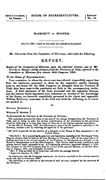
[p. 1]
40th Congress, 2d Session. House of Representatives. Report No. 79.
McGrorty vs. Hooper. July 9, 1868.—Laid on the table and ordered to be printed. Mr. Chanler, from the Committee of Elections, submitted the following Report. Report of the Committee of Elections upon the contested election case of McGrorty vs. Hooper, sitting delegate from the Territory of Utah, referred to the Committee of Elections first session 40th Congress, 1868.
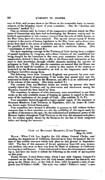
[p. 26]
CAMP AT MOUNTAIN MEADOWS, UTAH TERRITORY,
May 25, 1859.
MAJOR: When I left Los Angeles the 23d ultimo, General Clarke, commanding the department of California, directed me to bury the bones of the victims of that terrible massacre which took place on this ground in September, 1857.The fact of this massacre of (in my opinion) at least 120 men, women and children, who were on their way from the State of Arkansas to California has long been well known. I have endeavored to learn the circumstances attending it, and have the honor to submit the following as the result of my inquiries on this point.
Doctor Brewer, United States army, whom I
met with Captain Campbell's command on the Santa Clara river the 15th instant, informed me that as he was going up the Platte river, on the 11th of June, 1857, he passed a train of emigrants near O'Fallon's bluffs. The train was called "Perkins's train," a man
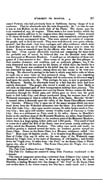
[p. 27]
named Perkins, who had previously been to California, having charge of it as conductor. That he afterwards saw the train frequently; the 1st time he saw it was at Ash Hollow, on the north fork of the Platte. The doctor says the train consisted of, say, 40 wagons. There were a few tents besides, which the emigrants used in addition to the wagons when they encamped. There seemed to be about 40 heads of families, many women, some unmarried, and many children. A doctor accompanied them. The train seemed to consist of respectable people, well to do in the world. They were well-dressed, were quiet, orderly, genteel; had fine stock; had three carriages, and other evidences which went to show that this was one of the finest trains that had been seen to cross the plains. It was so remarked upon by the officers who were with the doctor at that time. From reports afterwards received, and comparing the dates with the probable rate of travel, he believed this was the identical train which was destroyed at Mountain Meadows. I could get no information of these emigrants of a date anterior to this. Here seems to be given the first glimpse of their number, character, and condition, and an authentic glimpse, too, if the train destroyed was the one seen by the doctor, of which there can hardly be a doubt. The doctor was confirmed in his belief that the train he saw was the one destroyed by many reasons; among them one fact seems to be very convincing. He observed a carriage in the train in which some ladies rode, to whom he made one or more visits as they journeyed along. There was something peculiar in the construction of the carriage and its ornaments, its blazoned stag's head upon the panels, &c., &c. This carriage, he says, is now in possession of the Mormons. Besides, he afterwards heard as a fact that this train had been entirely destroyed. The people who owned it would not have been likely to sell such an important part of their transportation midway their journey. The road upon which these emigrants were seen by Doctor Brewer crosses the Rocky mountains through the South pass, and thence goes on down into the great basin to Salt Lake City; and thence southward along the western base of the Wahsatch mountains to what is called the Rim of the Basin. Here the "divide" is crossed, when it descends upon the valley of the Santa Clara affluent toward the Colorado. Fillmore City is upon one of the many streams which run westward down from the Wahsatch mountains into the basin. It is about 140 miles from Salt Lake City; then upon another stream, 90 miles farther south is Parowan City; then upon still another stream 18 miles south of Parowan is Cedar City; then to a settlement on Pinto creek is 24 miles; thence to Hamblin's house on the northern slope of the Mountain Meadows, six miles; from Hamblin's house over the Rim of the Basin to the southern point of the Mountain Meadows, where there is a large spring, is four miles and 1,000 yards. This swell of land or water-shed called the Rim of the Basin, runs west across nearly midway the valley called the Mountain Meadows. This valley runs north and south; its northern portion is drained toward the basin, its southern portion toward the Santa Clara. Down on the Santa Clara is a Mormon settlement called "the Fort." Here some 30 families reside. It is 34 miles from Mountain Meadows. East of Cedar City, say 18 miles on the east slope of the Wahsatch range drained by Virgin river, is the town of Harmony, of 100 families; and further down the Virgin river, 12 miles from " the Fort," on the Santa Clara, is Washington city, also of 100 families. The Santa Clara joins the Virgin river near Washington city.
The Pah-Vent Indians live near Fillmore City.
The Pah-Vent Indians are scattered along from Parowan southward to the Colorado.
The train of emigrants proceeding southward from Fillmore City toward the Mountain Meadows is next seen, so far as my inquiries go, by a Mr. Jacob Hamblin, a leading Mormon who has charge of "the Fort" on the Santa Clara and resides there in the winter season, but who has a cattle ranch and a house
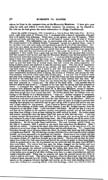
[p. 28]
where he lives in the summer-time, at the Mountain Meadows. I here give you what he said, and which I wrote down sentence by sentence as he related it. He told me he had given the same information to Judge Cradlebaugh.
About the middle of August, 1857, I started on a visit to Great Salt Lake City. At Corn creek, eight miles south of Fillmore City, I encamped with a train of emigrants, who said they were mostly from Arkansas. There were, in my opinion, not over 30 wagons. There were several tents, and they had from 400 to 500 head of horned cattle, 25 head of horses, and some mules. This information I got in conversation with one of the men of the train. The people seemed to be ordinary frontier "homespun" people as a general thing; some of the outsiders were rude and rough, and calculated to get the ill will of the inhabitants. Several of the men asked me about the condition of the road and the disposition of the Indians, and where there would be a good place to recruit their stock. I asked them how many men they had; they said they had between 40 and 50 "that would do to tie to." I told them I considered if they would keep a good look out that the Indians did not steal their animals, half that number would be safe, and that the Mountain Meadows was the best point to recruit their animals before they entered upon the desert. I recommended this spring and the grazing about it here, four miles south of my house, as the place where they should stop. The most of these men seemed to have families with them. They remarked that this one train was made up near Salt Lake City of several trains that had crossed the plains separately, and being southern people had preferred to take the southern route This was all of importance that passed between us, and I went on my journey, and they proceeded on theirs. On my way back home, at Fillmore City I heard it said that that company (meaning the train referred to) had poisoned small spring at Corn creek, where I had met them. There was some considerable excitement about it among the citizens of Fillmore, and among the Pah-Vent Indians, who lived within eight miles of that place. I was told that 18 head of cattle had died from drinking the water, that six of the Pah-Vents had been poisoned from eating the flesh of the cattle that died, and that one or two of these Indians had also died. Mr. Robinson, a citizen of Fillmore, whose son was buried the day I got there, said that the boy had been poisoned in "trying out" the tallow of the dead cattle. I am satisfied that he believed what he said about it. I thought at the time that the spring had been poisoned as stated. I encamped that night with a company from Iron county, who told me that the company from Arkansas had all been killed off at Mountain Meadows, except 17 children. I afterwards met, between Beaver and Pine creek, Colonel Daim, of Parowan, who confirmed what these people from Iron county had said. He further stated that the Indians were collecting on the Muddy with a determination to "wipe out" another company of emigrants, which was several days in rear of the first. He mentioned that the Indians had supplied themselves with arms and ammunition from the train destroyed at the Meadows. After consulting with him he advised me to go forward and spare no pains in trying to prevent their carrying their purpose into execution, and he gave me an order to press into service any animal I might require for that purpose. I got a horse at Beaver about 8 o'clock that evening. and the next evening, at Pinto creek, 83 miles distant, I met Mr. Dudley Leavett, from the settlements on the Santa. Clara. I told him what I had heard. He told me that it was true, and that all the Indians in the southern country were greatly excited, and all hell could not stop them from killing or from at least robbing the other train of its stock. He further stated that several interpreters from the Santa Clara had gone on with this last train. I told him to return and get the best animal he could find at my ranch, and go on as fast as he could and endeavor to stop further mischief being done; that if the Indians ran off the stock of the train, for himself and all the interpreters to go and recover it if possible, and prevent further depredations. He left me under these instructions. The next morning, which I think was the 18th of September, 1857, I arrived at my ranch, four miles from the Meadows. Here I had left my family. I found at the ranch three little white girls, in the care of my wife, the eldest six or seven years of age, the next about three, and the next about one. The youngest had been shot through one of her arms, below the elbow, by a large ball, breaking both bones and cutting the arm half off. My wife having a young child of her own, and these three little orphans besides, my home appeared to be anything but cheerful. About one or two o'clock that day I came down to the point where the massacre had taken place, in company with an Indian boy named Albert, who had been brought up in my family. The boy told me that the inhabitants from Cedar City had come down and buried the murdered people in three large heaps, which he pointed out to me; the boy showed me two girls who had run some ways off before they were killed. The wolves had dug open the heaps, dragged out the bodies, and weke then tearing the flesh from them. I counted 19 wolves at one of these places. I have since learned, from people who assisted in burying the bodies, that there were 107 men, women, and children found dead upon the ground. I am satisfied that all were not found. The most of the bodies were stripped of all their clothing, were then in a state of putrefaction, and presented a horrible sight. There was no property left upon the ground except one white ox, which is still at my ranch. The following summer, when the bones had lost all their flesh. I reburied them, assisted by a Mr. Fuller. The Indians have often told me that they made an attack on the emigrants between daylight and sunrise, as the men were standing around the camp fires, killing, and wounding fifteen at the first discharge, which was delivered from the
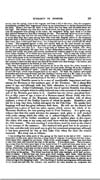
[p. 29]
ravine near the spring, close to the wagons, and from a hill to the west; that the emigrants immediately corralled their wagons and threw up an intrenchment to shelter themselves from the balls. When I first saw the ditch it was about four feet deep, and the bank about two feet high. The Indians say they then ran off the stock, but kept parties at the spring to prevent the emigrants from getting to the water: the emigrants firing upon them every time they showed themselves, and they returning the fire. This was kept up for six or seven days. The Indians say they lost but one man killed, and three or four wounded. At the end of six or seven days they say a man among them who could talk English called to the emigrants and told them if they would go back to the settlements and leave all their property, especially their arms, they would spare their lives; but if they did not do so, they would kill the whole of them. The emigrants agreed to this, and started back on the road toward my ranch. About a mile, from the spring there are some scrub oak bushes and tall sage growing on each side of the road, and close to it. Here a large body of Indians lay in ambush, who, when the emigrants approached, fell upon them in their defenceless condition, and with bows and arrows, and stones, and guns, and knives, murdered all, without regard to sex or age, except a few infant children, 17 of which have since been recovered. This is what the Indians told me nine days after the massacre took place. From the position of the bodies, this latter part of their story seems to be corroborated, and I should judge that the women and children were in advance of the men when the last attack upon them was made. When I buried the bones last summer I observed that about one-third of the skulls were shot through with bullets, and about one-third seemed to be broken in with stones.
The train I sent Leavett to protect had gotten as far as the canon five miles beyond the Muddy, when the Indians made a descent upon its loose stock, driving off, as the emigrants have since said, 280 head of cattle. Leavett and the other interpreters recovered between 75 and 100 head, which were brought back to my ranch. Of these the Indians afterwards demanded and stole some 40 head, and last January I turned over to a Mr. Lane, from California, the balance. These are all the facts within my knowledge, connected with the destruction of one, and the passing along of the other, of these two trains.
This Jacob Hamblin seems to be a man of considerable importance and note among the Mormons in this southern part of the Territory. He is about fifty years of age, and although with but little education, is a shrewd, intelligent, thinking man. Judge Cradlebaugh, I heard, was of opinion Hamblin was acting in good faith, and gave what he really believed was a true account of the massacre, and of the Mormon part taken in it. Hamblin has two wives: one about forty-five or fifty years of age, a sister of a Mormon named Hiram Judd, who lives at Hamblin's house at the Mountain Meadows; and another wife of about eighteen, a sister of the Dudley Leavett of whom he speaks. Hamblin is, and has for a long time been, Indian subagent for the Pah-Utes. He speaks their language well and has great influence with them. He told me the church had granted him a piece of land ten miles square, which covers the whole of the Mountain Meadows, the best grazing tract in Utah Territory. It is quite a significant fact that this ranch whereon the massacre took place is well stocked with cattle, among which the white ox is acknowledged to be. Mr. Hamblin and his story will be further considered upon at another place in this report. His eldest wife came to my camp and staid there with her husband the night of the 19th instant. The next morning I wrote down, word by word as she related it, her account of the massacre. Her husband took good care to be present at the time, and also took very good care to give her occasional promptings, although it has been perceived he was at Salt Lake City when the facts she related occurred. Her story was as follows:
I was residing four miles north of this spring at the ranch in the fall of 1857. Early in September of that year, about the first, a large train of wagons—I could not tell how many, think about fifty—passed by our house. None of the people stoped. There may have been a man who came and inquired the way to the spring. It was about noon. The next morning a man from the train came back to the house to see if I could sell him some butter and cheese. I had none, and he staid but a short time, saying his people had camped at the spring, where they would stay awhile to recruit their stock. I heard no more about the people of the train until Monday morning before daylight, when I heard a great number of guns firing at the spring. This firing was kept up until after daylight, all of half an hour, when it ceased. I did not hear any more guns until evening, after dusk, when the firing again began, but not so rapidly as before. This lasted say fifteen minutes, and I think there were some shots fired during the night. Sometimes I could not hear them so plainly as at other owing to the changing winds. After the firing of the first morning some white men came to our house and said that the Indians had attacked the train because the emigrants had
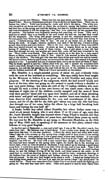
[p. 30]
poisened [sic.] a spring near Fillmore. There was but one man about our house. His name was David Tullis. He is an Englishman and now lives at the fort on Santa Clara. There was an Indian boy, Albert. Tullis was herding the cattle and Albert the sheep. The white men who stopped at our house and told us about the excitement among the Indians, said they had been here at the spring and tried the fighting, but that the Indians bad become enraged and were determined to kill the emigrants; that they were gathering for this purpose from all quarters. The Indians were frequently passing and repassing our house. They said I need not be afraid; they were friendly to me and would not hurt me, but that they would kill the emigrants. This firing and people passing to and fro, continued about a week. Several people from Harmony and other places gathered about and said they were trying to stop it. I noticed among them John D. Lee. He was at my house two or three times during the week. At length, between sundown and dark of the last day I heard a firing greater than before and more distinct. This is the time when the last of them were killed after they started toward our house. In about an hour a wagon drove up to our house having 17 children in it, the most of them crying. One, a girl about a year old, bad been shot through the arm, and another girl about four years old had been wounded in the ear. Their clothes were bloody. The wagon was driven up to the door by a man named Shurtz or Shirts, a son-in-law of John D. Lee. John D. Lee seemed to have the distributing of the children. The little girl who was shot through the arm could not well be moved. She had two sisters. Rebecca and Louisa, one seven and the other five, who seemed to be greatly attached to her. I persuaded Lee not to separate them, but to let me have all three of them. This he finally agreed to and the children staid with me, and I nursed the wounded child until it recovered, though it has lost forever the use of its arm. The next day after the last massacre, Lee and the rest started up the road with all the rest of the children in a wagon; and the Indians scattered off. This is all I know personally on the subject.
Mrs. Hamblin is a simple-minded person of about 45, and evidently looks with the eyes of her husband at everything. She may really have been taught by the Mormons to believe it is no great sin to kill Gentiles and enjoy their property. Of the shooting of the emigrants, which she had herself heard, and knew at the time what was going on, site seemed to speak without a shudder or any very great feeling; but when she told of the 17 orphan children who were brought by such a crowd to her own house—of one small room—there in the darkness of night, two of the children cruelly mangled, and the most of them with their parents' blood still wet upon their clothes, and all of them shrieking with terror and grief and anguish, her own mother heart was touched; she at least deserves kind consideration for her care and nourishment of the three sisters, and for all she did for the little girl "about one year old, who had been shot through one of her arms, below the elbow, by a large ball, breaking both bones and cutting the arm half off."
A Snake Indian boy called Albert Hamblin, but whose Indian name was a word which meant hungry, who is now about 17 or 18 years of age, says that Mr. Jacob Hamblin bought him beyond where Camp Floyd is located, and that he has lived with Mr. Hamblin six years here, and about three years up north. He was sent by Mr. Hamblin to my camp, at Mountain Meadows, on the 20th day of May, 1859, and, in speaking of the massacre at this place, related what follows, in very good English:
In the first part of September, a year and a half ago, I was at Mr. Haeiblin's ranch, four miles from here. My business was to herd sheep. I saw a train come along the road and pass down this way; it was near sundown. I drove the sheep home and went after wood, when I saw the train encamp at this spring from a high point of land where I was cutting wood. When the train passed me I saw a good many women and children. It was night when I got home. Another Indian boy named John, who lives at the Vegas, and talks some English, was with me. He lived with a man named Sam. Knight, at Santa Clara. After the train had been camped at this spring three nights, the fourth day in the morning just before light, when we were all abed at the house, I was waked up by hearing a good many guns fired; I could hear guns fired every little while all day until it was dark. Then I did not know what had been done. During the day, as we (John and I) sat on a hill herding sheep, we saw the Indians driving off all the stock, and shoot some of the cattle; at the same time we could see shooting going on down around the train; emigrants shooting at the Indians from the corral of wagons, and Indians shooting at them from the tops of the hills all around. In this way they fought on for about a week. I asked an Indian what he was killing those people for. He was mad, and told me unless I kept "my mouth shut" he would kill me. Three man came down from Cedar City to our house while the fighting was going on: they said they came after cattle. Other men passed to and fro from Santa Clara
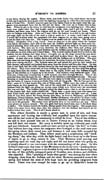
[p. 31]
to our house during the nights. These three men from Cedar City staid about the house awhile pitching horse-shoe quoits while the fighting was going on, when they afterwards went back to Cedar City. Dudley Leavett came up from Santa Clara in the night while the emigrants were encamped here, but he did not see them. He went on to Cedar City to buy flour. When he got to the house we told him the emigrants were fighting here. One afternoon, near night, after they had fought nearly a week, John and I saw the women and children, and some men, leave the wagons and go up the road toward our house. There were no Indians with them. John and I saw where the Indians were hid in the oak bushes and sage, right by the side of the road, a mile or more on their route; and I said to John I would like to know what the emigrants left their wagons for, as they were going into a worse fix than ever they saw. The women were on ahead with the children. The men were behind. Altogether 'twas a big crowd. Soon as they got to the place where the Indians were hid in the bushes, each side of the road, the Indians pitched right on them and commenced shooting them with guns and bow and arrows, and cut some of the men's throats with knives. The men ran in every direction, the Indians after them and yelling and whooping. Soon as the women and children saw the Indians spring out of the bushes, they all cried out so loud John and I heard them. The women scattered and tried to hide in the bushes, but the Indians shot them down; two girls ran up the slope toward the east about a quarter of a mile; John and I ran down and tried to save them; the girls hid in some bushes. A man who is an Indian doctor also told the Indians not to kill them. The girls then came out and hung around him for protection, he trying to keep the Indians away. The girls were crying out loud. The Indians came out and seized the girls by their hands and their dresses, and pulled and pushed them away from the doctor and then shot them. By this time it was dark, and the other Indians down by the road had got nearly through killing all the others. They were about half an hour killing the people from the time they first sprang out upon them from the bushes. Some time in the night, Tullis and the Indians brought some of the children in a wagon up to the house. The children cried nearly all night. One little one, a baby just commencing to walk around, was shot through the arm. One of the girls had been shot through the ear. Many of the children's clothes were bloody. The next morning we kept three children, and the rest were taken to Cedar City: also the next morning the trains of wagons went up to Cedar City with all the goods. The Indians got all the flour; some of it I saw buried this side of Pinto creek. There were two yoke of cattle to each wagon as they passed up. The rest of the stock had been killed to be eaten by the Indians while the fight was going on, except some which were driven over the mountains this way and that. The Indians stripped naked the dead bodies—that is, all the men; some of the women had their under-clothes left. There were a good many men who came over from Pinto creek, and about, and staid around the house while the fight went on. I saw John D. Lee there about the house during that time; he lives in Harmony; and Richard Robinson, Prima Coleman, Amos Thornton, Brother Dickinson, who all live at Pinto creek; Thornton I saw at the house. When father (Jacob Hamblin) came back I came down with him on to the grounds. The bodies were all buried then so we could not see any. There were plenty of wolves around. The two girls had been buried also, and I did show them to father. The Indians buried the bodies, taking spades from the wagons. The people from Cedar City came down three days after the massacre, but the Indians had buried all the bodies before they came. This is all I know about it.
This Albert Hamblin is nearly a grown man in point of size, and from appearance and bearing has evidently had engrafted upon his native viciousness all the bad traits of the community in which he lives. Two of the children are said to have pointed him out to Doctor Forney as an Indian whom they saw kill their two sisters. His story is artfully made up, evidently part truth and part falsehood. Leavett could not have passed up from "the fort" to Cedar City without knowing where the emigrants were besieged, as the road ruins near the spring where their corral was, and between it and some hills occupied by the Mormons and Indians. That Albert staid upon a neighboring hill "herding sheep," day after day, while the fight lasted, and then went up to the house of nights to go to sleep, cannot be true. That Mormons were passing and repassing upon the road, day and night, and did not know what was going on, is simply absurd to one conversant with the surroundings of the place. In this Indian's statement, that some of the Mormons at the house were "pitching horseshoe quoits," a glance is given at the fiendish levity with which the murdering, day by day, of this artfully entrapped party of Gentiles, men, women, anti children, was regarded. This "pitching of horse-shoe quoits" was during the time when dropping shots from the Indians and the other Mormons concealed around the spring and behind the crest of hills kept back the perishing emigrants from water. There was time enough for some to go up to Hamblin's house for
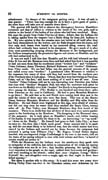
[p. 32]
refreshments. No danger of the emigrants getting away. It was all safe in that quarter. "There was time enough for us to have a quiet game of quoits; the other boys will take care of matters down there."
The general will hardly fail to observe the discrepancy between Hamblin's statement and that of Albert in relation to the burial of the two girls, and in relation to the burial of the bodies of the others who had been murdered. Hamblin says the people from Cedar City buried them; Albert, that the Indians did it, taking spades from the wagons—not a likely thing for bona fide Indians to do. My own opinion is that the remains were not buried at all until after they had been dismembered by the wolves, and the flesh stripped from the bones, and then only such bones were buried as lay scattered along nearest the road. Albert had evidently been trained in his statement. He gave much of it after close cross-questioning, keeping always the Mormons in the background, and the Indians conspicuously the prominent figures and actors, as Hamblin and his wife had endeavored to do.
It was not until I told him that Hamblin and his wife had informed me that John D. Lee and the Mormons were there and had asked him how it was possible he had not seen them that he recollected about "brother Lee" and "brothers" Prime Coleman, Amos Thornton, Richard Robinson, and "brother" Dickinson, from Pinto creek. He too had fallen into the general customs of the, people and called every man "brother." I questioned other Mormons in relation to the massacre, but many of them said they had moved from the northern part of the Territory since it took place. Others, that they were harvesting at Parowan, Cedar, and at "the fort," and knew nothing of it until it was all over. Even "brother" Prime Coleman told me he was harvesting near Parowan just before that time with "brother" Benjamin Nell, but when the massacre took place he was down on the Muddy river with "brother" Ira Hatch to keep down disturbances there among the Indians. (The Muddy is one hundred and sixty-three miles from Parowan on the road to California. He had to pass Mountain Meadows to go there.) He said that as he and Hatch were coming back they saw in the sand the tracks of three men who wore fine boots. This was at the Beaver Dams, between Mountain Meadows and the Muddy, and fifty miles from the Meadows. He and Hatch were frightened at this sign, were afraid of robbers, and did not stop even for water until they reached the Santa Clara, twenty miles off. At Pine Valley, near Mountain Meadows, they first heard of the massacre. There is no doubt but that all three of these men were active participants in the butchering at the Meadows. The foregoing is the Mormons' story of the massacre. As it took place on Hamblin's ranch, and within hearing of his family, it was impossible for them to be "out harvesting," or " up north" or "down on the Muddy." He himself had gone to Salt Lake City; at least be says so; but then this I think needs proof. Some account had to be made up, and the one most likely to be believed was, that the whole matter had been started by the Indians and carried out by them, because the emigrants had poisoned a spring near Fillmore City! Mr. Rogers, United States deputy marshal, who accompanied Judge Cradlebaugh in his tour to the south, told me the water of the spring referred to runs with such volume and force, "a barrel of arsenic would not poison it."
While the Mormons say the Indians were the murderers, they speak with no sympathy of the sufferers, but rather in extenuation of the crime, by saying the emigrants were not fit to live; that besides poisoning the spring," they were impudent to the people on the road; robbed their hen-roosts and gardens; and were insulting to the church; called their oxen Brigham Young,' 'Heber Kimball,' &c., and altogether were a rough, ugly set that ought to have been killed anyway."
But there is another side to this story: It is said that some two years since
Bishop Perley Pratt was shot in the Cherokee nation, near Arkansas, by the
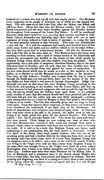
[p. 33]
husband of a woman who had run off with that saintly prelate. The Mormons swore vengeance on the people of Arkansas, one of whom was the injured husband. The wife came on to Salt Lake City after the bishop was killed, and still lives there. About this time, also, the Mormon troubles with the United States commenced, and the most bitter hostility against the Gentiles became rife throughout Utah Territory among all the Latter Day Saints. It will be recollected that even while these emigrants were pursuing their journey overland to California, Colonel Alexander was following upon their track with two or more regiments of troops ordered to Utah Territory to assist, if necessary, in seeing the laws of the land properly enforced in that Territory. This train was undoubtedly a very rich one. It is said the emigrants had nearly nine hundred head of fine cattle, many horses and mules, and one stallion valued at two thousand dollars; that they had a great deal of ready money besides. All this the Mormons at Salt Lake City saw as the train came on. The Mormons knew the troops were marching to their country, and a spirit of intense hatred of the Americans and toward our government was kindled in the hearts of this whole people by Brigham Young, Orson Hyde, and other leaders, even from the pulpits. Here, opportunely, was a rich train of emigrants, American Gentiles, that is, the most obnoxious kind of Gentiles; and not only that, but these Gentiles were from Arkansas, where the saintly Pratt had gained his crown of martyrdom. Is not here some thread which may be seized as a clue to this mystery, so long hidden, as to whether or not the Mormons were accomplices in the massacre? This train of rich Arkansas Gentiles was doomed from the day it crossed through the South pass and had got fairly down into the meshes of the Mormon spider-net from which it was never to become disentangled. Judge Cradlebaugh informed me that about this time Brigham Young, preaching in the Tabernacle, and speaking of the troubles with the United States, said that up to that moment he had protected emigrants who had passed through the Territory, but now he would turn the Indians loose upon them. It is a singular point, worthy of note, that this sermon should have been preached just as the rich train had got into the valley and was now fairly entrapped; a sermon, good coming from him as a letter of Mengne to these land pirates, who listened to him as to an oracle. The hint thus shrewdly given was not long in being acted upon. From that moment these emigrants, as they journeyed southward, were considered the authorized, if not legal, prey of the inhabitants. All kinds of depredations and extortions were practiced upon them. At Parowan they took some wheat to the mill to be ground; the miller went to ask the bishop if he might grind this grain for the damned Gentiles. The bishop replied, "Yes; but do you take double toll." This shows the spirit with which they were treated. These things are now leaking out; some of those who were then Mormons have renounced their creed, and through them much is learned, which, taken in connection with facts that are known, serve to develop the truth. It is said to be a truth that Brigham Young sent letters south authorizing, if not commanding, that the train should destroyed. A Pah-Ute chief, of the Santa Clara band, named Jackson, who was one of the attacking party, and had a brother slain by the emigrants from their corral by the spring, says that orders came down in a letter from Brigham Young that the emigrants were to be killed; and a chief of the Pah-Utes named Tonche, now living on the Virgin river, told me that a letter from Brigham Young to the same effect was brought down to the Virgin river band by a man named Huntingdon, who, I learn, is an Indian interpreter and lives at present at Salt Lake City. Jackson says there were sixty Mormons led by Bishop John D. Lee, of Harmony, and a prominent man in the church named Haight, who lives at Cedar City; that they were painted and disguised as Indians; that this painting and disguising was done at a spring in a canon about a mile northeast of the spring, where the emigrants were encamped, and that Lee and Haight
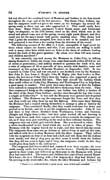
[p. 34]
led and directed the combined force of Mormons and Indians in the first attack throughout the siege, and at the last massacre. The Santa Clara Indians say that the emigrants could not get to the water, as the besiegers lay around the spring ready to shoot any one who approached it. This could easily have been done. Major Prince, paymaster United States army, and Lieutenant Ogle, 1st dragoons, on the 17th instant, stood on the ditch which was in the corral and placed some men at the spring, twenty-eight yards distant, and they could just see the men's heads: both parties standing erect. This shows how vital a point the assailants occupied, how close it was to be assailed: and how well protected it was from a fire coming from the direction of the corral.
The following account of the affair is, I think, susceptible of legal proof, by those whose names are known, and who, I am assured, are willing to make oath to many other facts which serve as links in the chain of evidence leading toward the truth of this grave question: By whom were these 120 men, women, and children murdered?
It was currently reported among the Mormons at Cedar City, in talking among themselves, before the troops even came down south,(when all felt secure of arrest or persecution,) and nobody seemed to question the truth of it, that a train of emigrants of 50 or upwards, of men, mostly with families, came and encamped at this spring at Mountain Meadows, in September, 1857. It was reported in Cedar City, and was not, and is not doubted, even by the Mormons, that John D. Lee, Isaac C. Haight, John M. Higby, (the first resides at Harmony, the last two at Cedar City,) were the leaders who organized a party of 50 or 60 Mormons to attack this train. They had also all the Indians which they could collect at Cedar City, Harmony, and Washington City, to help them, a good many in number. This party then came down, and at first the Indians were ordered to stampede the cattle and drive them away from the train. They then commenced firing on the emigrants; one Indian was killed, a brother of the chief of the Santa Clara Indians; another shot through the leg, who is now a cripple at Cedar City.* It was said the Mormons were painted and disguised as Indians. The Mormons say the emigrants fought like lions, and that they saw they could not whip them by any fair fighting. After some days' fighting the Mormons had a council among themselves to arrange a plan to destroy the emigrants. They concluded, finally, that they would send some few down and pretend to be friends, and try to get the emigrants to surrender. John D. Lee and three or four others, headmen from Washington, Cedar, and Parowan, (Haight and Higby from Cedar, had their paint washed off, and dressing in their usual dress, took their wagons and drove down towards the emigrants' corral, as if they were just travelling on the road on their ordinary business. The emigrants sent out a little girl towards them. She was dressed in white. Had a white handkerchief in her hand which she waved in token of peace. The Mormons with the wagons waved one in reply, and then moved into the corral. The emigrants them came out, no Indians or others being in sight at this time,and talked with these leading Mormons with the three wagons. They talked with the emigrants an hour or an hour and a half, and told them that the Indians were hostile, and that if they gave up their arms it would show the Indians that they did not want to fight, and if they, the emigrants, would do this they would pilot them back to the settlements.
The emigrants had horses which had remained near their wagons; the loose stock, mostly cattle, had been driven off, not the horses. Finally the emigrants agreed to those terms, and delivered up their arms to the Mormons with whom they had counselled. The women and children then started back toward Hamblin's house, the men following with a few wagons that they had hitched up. On arriving at the scrub oaks, &c, where the other Mormons and Indians lay
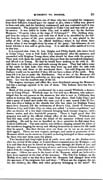
[p. 35]
concealed, Higby, who had been one of those who had inveigled the emigrants from their defences, himself gave the signal to fire, when a volley was poured in from each side, and the butchery commenced, and was continued until it was consummated. The property was brought to Cedar City and was sold at public auction. It was called in Cedar City, and is called now by the facetian Mormons, "Property taken at the siege of Sebastopol!" The clothing stripped from the corpses, bloody, and with lots of flesh in it, shredded by the bullets from the persons of the poor creatures who wore it, was placed in the cellar of the tithing office, (an official building,) where it lay about three weeks, when it was brought away by some of the party; but witnesses do not know whether it was sold or given away. It is said the cellar smells of it even to this day.
It is reported that John D. Lee, Haight, and Philip Smith, (the latter lived in Cedar City,) went to Salt Lake City immediately after the massacre, and counselled with Brigham Young about what should be done with the property. They took with them the ready money they got from the surrendered emigrants, and offered it to Young. He said he would have nothing to do with it. He told them to divide the cows and cattle among the poor. They had taken some of the cattle to Salt Lake City when they went up, and after the talk with Brigham they sold these to the merchants there. Lee told Brigham that the Indians would not be satisfied if they did not have a share of the cattle. Brigham left it to Lee to make the distribution. One or two of the Mormons did not like that Lee had this authority, as they say he swindled them out of their share. Lee was the smallest man of the lot.
The wagons, carriages, and rifles, &c., were distributed among the Mormons. Lee has a carriage reported to be one of them. The Indians have but few of the rifles.
Much of this seems to be corroborated by a man named Whitlock, a dentist, now at Camp Floyd. Whitlock says he was told by a Mormon, who acknowledged that he was present at the massacre, but who is now in California, that orders to destroy the emigrants first came from above, (Salt Lake City,) and that a party of armed men under the command of a man named John D. Lee, who was then a bishop in the church, but who has since (as Brigham Young says) been deposed, left the settlements of Beaver City, (north of Parowan,) Parowan City, and Cedar City, on what was called "a secret expedition," and after an absence of a few days returned, bringing back strange wagons, cattle, horses, mules, and also household property. There is legal proof that this property was sold at the official tithing office of the church. Whitlock says that this man could not report the detail of the massacre without tears and trembling. He said he was so horrified at these atrocities he fled away from Utah to California. The man said he saw children clinging around the knees of the murderers begging for mercy and offering themselves as slaves for life could they be spared. But their throats were cut from ear to ear as an answer to their appeal. There are now wagons, carriages, and cattle in possession of the Mormons which can be sworn to, it is said, as having belonged to these emigrants by those who saw them upon the plains.
Two hundred and forty-eight head of cattle were sold on the Jordan river, after the arrival of the army, to United States commissioners, by Mormons; it is said that they can be traced as having come through the hands of Lee, and Hooper, who was Mormon secretary of state, and were, without doubt, the cattle taken from the emigrants. The Indians are supposed to have gotten but few of the arms. Others are seen in the hands of the Mormons, which are believed to have been captured at the time of the massacre. The Pah-Ute Indians, on the Muddy river, said to me that they knew the Mormons had charged them with the massacre of the emigrants, but said they: "Where are the wagons, the cattle, the clothes, the rifles, and other property belonging to the train? We
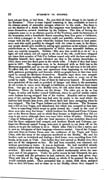
[p. 36]
have not got them, or had them. No, you find all these things in the hands of the Mormons." There is some logical reasoning in that, creditable at least to the obscure minds of miserable savages, whatever be the truth. But there is not the shadow of a doubt but that the emigrants were butchered by the Mormons themselves, assisted doubtless by the Indians. The idea of letting the emigrants come on to an obscure quarter of the Territory, amid the fastnesses of the mountains, with a formidable desert extending from that point to California, over which a stranger to the country could not possibly, without sustenance, escape with his life; to a point where the Indians were numerous to lend assistance, and who could possibly be charged with the crime in case, in the future, any people should give trouble by asking ugly questions on the subject, exhibits consideration as to future contingencies of which these miserable Indians, at least, are entirely incapable. Besides, "fifty men that would do to tie to" in a fight, all well armed, and all expert in the use of the rifle, could have whipped ten times their number of Pah-Ute Indians armed only with the bow and arrow. Hamblin himself, their agent, informed me that to his certain knowledge, in 1855, there were but three guns in the whole tribe. I doubt if they had many more in 1857. The emigrants were to be destroyed with as little loss to the Mormons as possible, and no one old enough to tell the tale was to be left alive. To effect this, the whole plan and operations from beginning to end display skill, patience, pertinacity, and forecast, which no people here at that time were equal to, except the Mormons themselves. Hamblin says three men escaped. They were doubtless herding when the attack was made, or crept out of the corral by night. The fate of one of these he had never learned. He must have been murdered off the road, or perished of hunger and thirst in the mountains. At all events, he never went through to California, or he would have been heard from. One got as far as the Muddy river, 90 odd miles from the Mountain Meadows. There the Indians cut his throat. The other got as far as Las Vegas, 45 miles still further toward California, where he arrived totally naked, some Indians having stripped him of his clothes. Hamblin said an acquaintance of his coming from that way had seen by marks in the sand where the Indians had thrown him down, and where there had been struggling when he was stripped. The Las Vegas Indians cut his throat likewise. The Mormons had a fort at Las Vegas, now abandoned, but which was occupied at that time.
Here is something which seems to point toward the "track in the sand of three men who wore fine boots," which brothers Ira Hatch and Prime Coleman saw at the Beaver Dams, and at which they became so frightened they did not stop to get water, although there was none other within 20 miles. During this "siege of Sebastopol," or after the final massacre, it was doubtless discovered that the three emigrants had escaped, and brothers Hatch and Coleman, perhaps two Mormons named Young, were sent in pursuit to cut them off on the desert, or to get the Indians to do it. Hatch talks Pah-Ute like a native, and is now an interpreter of their language whenever needed. One of the Youngs, who now lives at Cotton Farm, near the confluence of the Virgin and Santa Clara, tells this story of the emigrants murdered on the Muddy. He and his brother, each on horseback and leading a third horse, were travelling from California, as he says, to Utah. Just before they had arrived at Muddy river they met one of the emigrants on foot. He had been wounded, was unarmed, and without provisions or water. It was at daybreak. He had travelled already nearly a hundred miles from the Mountain Meadows. He seemed to be terror-stricken. His mind was wandering. He talked incoherently about the massacre and of his purposes. Under the awful scenes he had witnessed, the pain of his wound, and the privations he had endured, his senses had given way. They told him of the long deserts ahead, on which, if he pursued his way, he would certainly perish. They persuaded him to return with them, mounted him on their led horse, and so came on to the Muddy, where they stopped to
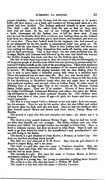
[p. 37]
prepare breakfast. One of the Youngs laid his coat, containing in its pocket $300—all their money—on a bush, and commenced frying some cakes at a fire which had been kindled. The Indians gathered around in great numbers. The chief would seize the cakes from the pan as fast as they were done and eat them. At last one of the Youngs struck the chief with a knife, where upon all the Indians rose to kill the three men. Young says he and his brother drew their revolvers, and holding them on the Indians kept them at a distance until they got to their horses, had mounted, and were out of arrow-shot. They then looked back for the emigrant, who had seemed, as he sat abstracted by the fire, hardly to comprehend what was going on. He had not left the spot where he eat. Three or four Indians had him down and were cutting his throat. They themselves then made off, leaving coat, money, and all their provisions. This is their story; bet the truth doubtless was, the Youngs, Hatch, and Coleman had followed up the man, had found him beyond the Muddy, brought him back, and then set the Indians upon him.
The fate of these three men seems to close the scenes of this terrible tragedy on all the grown people of that fine train which was seen journeying prosperously forward at O'Fallon's bluffs on the 11th of the preceding June. There were doubtless atrocious episodes connected with the massacre of the women which will never be known. Mr. Rodgers, the deputy marshal, told me that Bishop John D. Lee is said to have taken a beautiful young lady away to a secluded spot. There she implored him for more than life. She, too, was found dead. Her throat had been cut from ear to ear. The little Children whom we left this John D. Lee distributing at Hamblin's house after that sad night have at length been gathered together, and are now either at Indian Farm, 12 miles south of Fillmore City , or at Salt Lake City, in the custody of Dr. Forney, United States Indian agent. They are 17 in number. Sixteen of these were seen by Judge Cradlebaugh, Lieutenant Kearney, and others, who gave the following information in regard to their personal identity, &c. The children were varying from three to nine years of age—10 girls, six boys—and were questioned separately.
The first is a boy named Calvin; between seven and eight: does not remember his surname. Says he was by his mother when she was killed, and pulled the arrows from her back until she was dead. Says he had two brothers older than himself, named Henry and James, and three sisters, Nancy, Mary and Martha.
The second is a girl who does not remember her name; the others say it is Demurr.
The third is a boy named Ambrose Miriam Tagit. Says he had two brothers older than himself, and one younger. His father, mother, and two older brothers were killed; his younger brother was brought to Cedar City. Says he lived in Johnson county; but does not know in what State. Says it took one week to go from where he lived to his grandfather's and grandmother's, who are still living in the States.
The fourth is a girl obtained of John Morris, a Mormon at Cedar City. She does not recollect anything about herself.
The fifth is a boy obtained of E. H. Grove. Says that the girl obtained of Morris is named Mary, and is his sister.
The sixth is a girl who says her name is Prudence Angelina. Had two brothers, Jesse and John, who were killed. Her father's name was William, and she had an uncle Jesse.
The seventh is a girl. She says her name is Frances Harris or Horne; remembers nothing of her family.
The eighth is a young boy; too young to remember anything about himself.
The ninth is a boy who says his name is William W. Huff.
The tenth is a boy who says his name is Charles Francher.
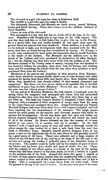
[p. 38]
The eleventh is a girl who says her name is Sophronia Huff.
The twelfth is a girl who says ber name is Betsey.
The thirteenth, fourteenth, and fifteenth are three sisters, named Rebecca, Louisa and Sarah Dunlap. These three sisters were the children obtained of Jacob Hamblin.
I have no note of the sixteenth.
The seventeeth is a boy who was but six weeks old at the time of the massacre. Hamblin's wife brought him to my camp on the 19th instant. The next day they took him on to Salt Lake City, to give him up to Dr. Forney. He is a pretty little boy, and hardly dreamed he had again slept upon the ground where his parents had been murdered. These children, it is said, could not be induced to make any developments while they remained with the Mormons, from fear, no doubt having been intimidated by threats. Dr. Forney, it is said, came southward for them under the impression that he would find them in the hands of the Indians. The Mormons say the children were in the hands of the Indians, and were purchased by themselves for rifles, blankets, &c.; but the children say they have never lived with the Indians at all. The Mormons claimed of Dr. Forney sums of money, varying from two hundred to four hundred dollars, for attending them when sick, for feeding and clothing them, and for nourishing the infants from the time when they assumed to have purchased them from the Indians!
Murderers of the parents and despoilers of their property, these Mormons, rather these relentless, incarnate fiends, dared even to come forward and claim payment for having kept these little ones barely alive; these helpless orphans whom they, themselves, had already robbed of their natural protectors and supporters! Has there ever been an act which at all equalled this in devilish hardihood, in more than devilish effrontery? Never but one; and even then the price was but "thirty pieces of silver."
On my arrival at Mountain Meadows, the 16th instant, I encamped near the spring where the emigrants had encamped, and where they had intrenched themselves after they were first fired upon. The ditch they there dug is not yet filled up. The same day Captain Reuben P. Campbell, United States 2d dragoons, with a command of three companies of troops, came from his camp on the Santa Clara and encamped there also. Judge Cradlebaugh and Deputy Marshall Rodgers had come down from Provo with Captain Campbell, and had been inquiring into the circumstances of the massacre. The judge cannot receive too much praise for the resolute and thorough manner with which he pursues his investigations. On his way down past this spot, and before my arrival, Captain Campbell had caused to be collected and buried the bones of 26 of the victims. Dr. Brewer informed me that the remains of 18 were buried in one grave, 12 in another, and six in another. On the 20th instant I took a wagon and a party of men, and made a thorough search for others among the sage bushes for at least a mile back from the road that leads to Hamblin's house. Hamblin himself showed Sergeant Fritz, of my party, a spot, on the right-hand side of the road where he had partially covered up a great many of the bones. These were collected, and a large number of others on the left-hand side of the road up to the slope of the hill, and in the ravines, and among the bushes, I gathered many of the disjointed bones of 34 persons. The number could be easily told by the number of pairs of shoulder blades, and by lower jaws, skulls, and parts of skulls, &c., &c. These, with the remains of two others gotten in a ravine to the east of the spring, where they had been interred at but little depth, 34 in all, I buried in a grave on the northern side of the ditch. Around and above this grave I caused to be built, of loose granite stones, hauled from the neighboring hills, a rude monument, conical in form, and 50 feet in circumference at the base, and 12 feet in height. This is surmounted by a cross, hewn from red cedar wood. From the ground to the top of the cross is 24 feet. On the transverse part of the cross,
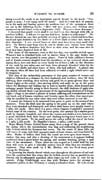
[p. 39]
facing toward the north, is an inscription carved deeply in the wood: "Veageance is mine: I will repay saith the Lord." And on a rude slab of granite, set in the earth and leaning against the northern base of the monument there are cut in the following words: "Here 120 men, women, and children were massacred in cold blood, early in September, 1857. They were from Arkansas."
I observed that nearly every skull I saw had been shot through with rifle or revolver bullets. I did not see one that had been "broken in with stones." Dr. Brewer showed me one, that probably of a boy of eighteen, which had been fractured and split doubtless by two blows of a bowie knife or other instrument of that character. I saw several bones of what must have been very small children. Dr. Brewer says from what he saw he thinks some infants were butchered. The mothers doubtless had these in their arms, and the same shot or blow may have deprived both of life.
The scene of the massacre, even at this late day, was horrible to look upon. Women's hair in detached locks and in masses hung to the sage bushes and was strewn over the ground in many places. Parts of little children's dresses and of female costume dangled from the shrubbery, or lay scattered about., and among these, here and there on every hand, for at least a mile in the direction of the road, by two miles east and west, there gleamed, bleached white by the weather, the skulls and other bones of those who had suffered. A glance into the wagon, when all these had been collected, revealed a sight which never can be forgotten.
The idea of the melancholy procession of that great number of women and children, followed at a distance by their husbands and brothers, after all their suffering, their watching, their anxiety and grief, for so many gloomy days and dismal nights at the corral; moving slowly and sadly on up to the point where the Mormons and Indians lay in wait to murder them; these doomed and unhappy people literally going to their funeral; the chill shadows of night closing darkly around them—sad precursors of the approaching shadows of a deeper night— brings to the mind a picture of human suffering and wretchedness on the one hand, and of human treachery and ferocity upon the other, that cannot possibly be excelled by any other scene that ever before occurred in real life.
I caused the distance to be measured from point to point on the scenes of this massacre. From the ditch near the spring to the point up on the road where they were attacked and destroyed, and where their bones were mostly found, is 1 mile, 565 yards. Here there is a grave where Captain Campbell's command buried some of the remains. To the next point, also marked by a similar grave made by Captain Campbell, and where the women and children were butchered, a point identified from their bones and clothing having been found near it, is 1 mile, 1,135 yards. To the swell across the valley called the rim of the basin is 1 mile, 1,334 yards. To Hamblin's house, 4 miles, 1,049 yards.
Major Henry Prince, United States army, drew a map of the ground about the spring where the intrenchment was dug, and embracing the neighboring hills, behind which the Mormons had cover. On the crests of these hills are still traces of some rude little parapets made of loose stones, and loop-holed for rifles. Marks of bullets shot from the corral are seen upon these stones. I enclose this map, and also a drawing of the monument as it appears looking northward from a point below the spring, and another thawing, giving a near view of the monument. These latter are not so good as I could wish for, but they will serve to give a tolerably correct idea of what they are intended to represent. They were made by a Mr. Moeller, who has lived many years among the Mormons.
In pursuing the bloody thread which runs throughout this picture of sad realities, the question how this crime, that for hellish atrocity has no parallel in our history, can be adequately punished, often comes up and seeks in vain for an answer. Judge Cradlebaugh says that with Mormon juries the attempt to administer justice in this Territory is simply a ridiculous farce. He believes the
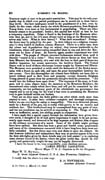
[p. 40]
Territory ought at once to be put under martial law.This may be the only practicable way in which even partial punishment can be meted out to these Latter Day devils. But how inadequate would be the punishment of a few, even by death, for this crime, which nearly the whole Mormon population, from Brigham Young down, were more or less instrumental in perpetrating. There are other heinous crimes to be punished; besides, this martial law would at best be but a temporary expedient.Crime is found in the footsteps of the Mormons wherever they go, and so the evil must always exist as long as the Mormons themselves may exist. What is their history? What their antecedent? Perhaps the future may he judged by the past. In their infancy as a religious community (!) they settled in Jackson county, Missouri. There in a short time, from the crimes and depredations they committed, they became intolerable to the inhabitants, whose self preservation compelled them to rise and drive the Mormons out by force of arms. At Nauvoo, again, another experiment was tried with them. The people of Illinois exercised forbearance toward them until it "ceased to be a virtue." They were driven thence as they had been from Missouri, but fortunately, this time with the loss on their part of those two shallow impostors, but arrant miscreants, the brothers Smith. The United States took no heed of these wholesome lessons taught by Missouri and Illinois. The Mormons were permitted to settle amid the fastnesses of the Rocky mountains, with a desert on each side, and upon the great thoroughfare between the two oceans.Over this thoroughfare our citizens have hitherto not been able to travel without peril to their lives and property, except, forsooth, Brigham Young pleased to grant them his permission and give them his protection. "He would turn the Indians loose upon them." The expenses of the army in Utah, past, and to come, (figure that,) the massacre at the Mountain Meadows, the unnumbered other crimes which have been, and will yet be committed by this community, are but preliminary gusts of the whirlwinds our government has reaped, and is yet to reap, for the wind it has sown in permitting the Mormons ever to gain foothold within our borders.
They are an ulcer upon the body politic—an ulcer which needs more than cautery to cure. It must have excision—complete and thorough extirpation, before we can ever hope for safety or tranquillity. This is no rhetorical phrase, made by a flourish of the pen, but is really what proves to be an earnest and stubborn fact. This brotherhood may be contemplated from any point of view, and but one conclusion can be arrived at concerning it. The Thugs of India were an inoffensive, moral, law-abiding people in comparison.
I have made this a special report, because the information here given, however crude, I thought to be of such grave importance it ought to be put permanently upon record, and deserved to be kept separate and distinct from a report on the ordinary occurrences of a march. Some of the details might perhaps have been omitted. But there has been a great and fearful crime perpetrated, and many of the circumstances connected with it have long been kept most artfully concealed. But few direct rays even now shine in upon the subject. So that however indistinct and unimportant they may at present appear to be, even the faint side-lights given by these details may yet lend assistance in exploring some obscure recess of the matter, where the great truths that, should be diligently and persistently sought for may yet be happily discovered.
I have the honor to be, very respectfully, your obedient servant,
JAMES HENRY CARLETON, Breret Major 17. 8. A , Captain ix the 1st Dragoons. Major W. 'W. MacKALL, Assistant Adjutant General, U. S. A., San Francisco, California.
A. G. OFFICE. March 23, 1868